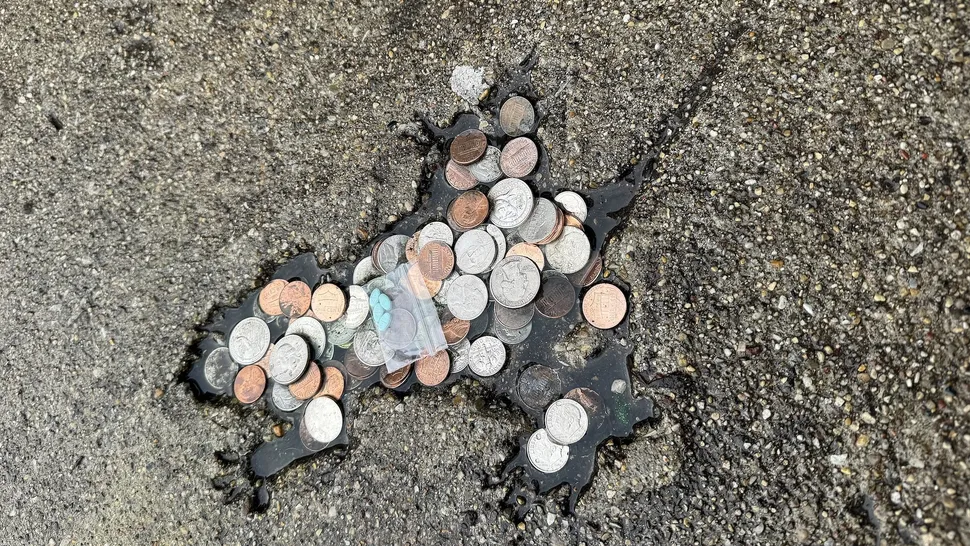After researching the rodent indent, scientists are over 98% sure it came from a squirrel.
A curious sidewalk mark in Chicago — once believed to be the outline of a rat and now an unlikely tourist attraction — may have a very different origin story.
A new study suggests that the so-called “Chicago Rat Hole,” which went viral in early 2024 as people flocked to it with coins and trinkets, was probably not left by a rat at all. Instead, researchers say it’s far more likely the imprint of a squirrel.
The findings, published Wednesday (Oct. 15) in Biology Letters, come from a team that compared the hole’s proportions and details with data on local rodent species. Their analysis pointed strongly toward a squirrel — most likely an eastern gray squirrel (Sciurus carolinensis) or fox squirrel (Sciurus niger) — as the true source of the mark.
“Like most people, my first thought was, ‘Yep, that’s a rat,’” said study lead author Michael Granatosky, an evolutionary biomechanist at the University of Tennessee, Knoxville. “But assumptions aren’t how good science gets done.”
The odd imprint, preserved for decades in a patch of sidewalk concrete, exploded in popularity when Chicago comedian and artist Winslow Dumaine posted about it on X (formerly Twitter). Locals and tourists soon began treating the site as a quirky shrine, leaving offerings and taking photos.
“Squirrels have much better public relations than rats,” Dumaine joked to Live Science. “Still, I think calling it a ‘rat hole’ helped make it a phenomenon.”
But not everyone was convinced of its rodent roots. Edwin Dickinson, senior study author and archaeologist at the University of Calgary, said that when researchers saw photos online, they noticed it didn’t quite match the anatomy of a rat — and no footprints surrounded it, something a rat would almost certainly have left in wet concrete.
To test their theory, the team used iNaturalist, a citizen science database, to cross-reference potential species found in the Chicago area. Based on the indent’s shape — four legs, five claws, and a tail — the suspects were narrowed down.
Although city officials removed the piece of sidewalk in April 2024 due to crowds gathering in the Roscoe Village neighborhood, countless fan photos provided reference points. Using coins and keys in those images for scale, researchers were able to calculate the imprint’s exact dimensions.
When compared with specimens at the American Museum of Natural History, statistical analysis showed a 98.7% probability that the impression belonged to a squirrel, not a rat.
In light of their discovery, the researchers jokingly proposed renaming the site the “Windy City Sidewalk Squirrel.”
Still, they said, the project carries a more serious message about curiosity and scientific thinking.
“The ‘rat hole’ is just a fun example,” Dickinson said. “But what we really want people to take away is that science isn’t mysterious — it’s about questioning assumptions and looking closer at the world around us.”
